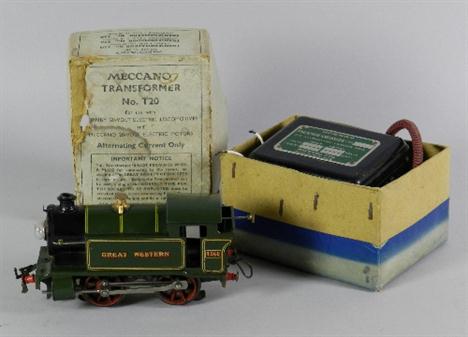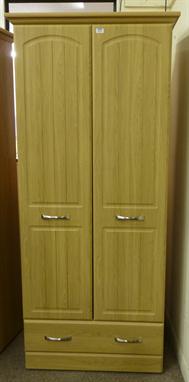534297 Preisdatenbank Los(e) gefunden, die Ihrer Suche entsprechen
534297 Lose gefunden, die zu Ihrer Suche passen. Abonnieren Sie die Preisdatenbank, um sofortigen Zugriff auf alle Dienstleistungen der Preisdatenbank zu haben.
Preisdatenbank abonnieren- Liste
- Galerie
-
534297 Los(e)/Seite
Smoky Quartz SkullA stylized crystal skull carved from a light smoky quartz, with several attractive bubble veils and an internal separation that produces an attractive rainbow effect. 1.1 kg, 11 cm. (4 1/2"). Ex Douglas Rose collection. Crystal skulls are a number of human-skull hardstone carvings. They are often claimed to be pre-Columbian Mesoamerican artifacts by their alleged finders, however, none of the specimens made available for scientific study have been authenticated as pre-Columbian in origin. The skulls are often claimed to exhibit paranormal phenomena by some members of the New Age movement, and have often been portrayed as such in fiction. These skulls were created in this context.[No Reserve]Very fine condition.Starting Price: £5
Sikhote-Alin Meteorite PiecesTwo pieces of the Sikhote-Alin meteorite, which hit Siberia in 1947; a large piece in as found condition and a smaller sample cleaned and polished for display. Classified as an iron meteorite belonging to the chemical group IIAB and with a coarse octahedrite structure. See Meteoritical Bulletin and database. 350 grams, 53-63 mm. (2-2 1/2"). Ex Douglas Rose collection; from Sikhote-Alin Mountains, 12th February 1947. The Sikhote-Alin meteorite fell during daylight at 10:38 am. local time on 12th February, 1947. Witnesses reported a fireball that was brighter than the sun. It came from about 15 degrees east of north and descended at an angle of 41 degrees. It left a trail of smoke and dust 20 miles long which lingered for several hours. Light and sound of the fall were observed for two hundred miles around the point of impact.[2, No Reserve]Fine condition, one unpolished.Starting Price: £5
Egyptian Faience Scarab and Wedjat Eye NecklaceLate Dynastic Period, 664-332 BC A restrung necklace comprising groups of small light-blue glazed faience disc beads interspersed with larger blue-glazed wedjat eyes and unglazed scarabs in pale blue and white, with a large central scarab. 30 grams, 48 cm. (23"). London collection; acquired in the 1950`s. Fine condition.Starting Price: £100
Egyptian Faience and Stone Scarab GroupNew Kingdom-Ptolemaic Period, 1470-30 BC A mixed group of scarabs, one in dark stone, one in light stone, two blue-glazed faience, five in unglazed white ceramic, one stone scaraboid; designs and text to underside. 29 grams total, 9-26 mm. (1/4-1"). London collection; acquired in the 1950`s. [10, No Reserve]Fine condition.Starting Price: £5
Egyptian Group of Ten ScarabsPtolemaic Period, 305-30 BC A group of ten scarabs, comprising four in unglazed white faience, one with small traces of blue glaze remaining; one, smaller, in light brown faience; two blue-glazed; one grey with traces of blue glaze remaining; one small, dark brown, and one in black stone with unincised body; all ten pierced for attachment or suspension. 10 grams total, 10-15 mm. (1/2 - 3/4"). Property of a London Gentleman; acquired before 1975. [10, No Reserve]Fine condition, some with damage.Starting Price: £5
Bronze Age English Socketted Arrow or Javelin PointLate Bronze Age, 1,200-900 BC A cast bronze socketted projectile point with symmetrical tapering convex cutting edges and a neatly formed securing rivet hole to each side of the socket. See Evans, Sir J.The Ancient Bronze Implements, Weapons and Ornaments of Great Britain, 1881, p.326 for a similar item of looped and socketted form. 18 grams, 49 mm. (2"). Found by Ian Price in the side of a river bank, to the south of Eye, Suffolk, just off the road to Occold, 7th July 2012. This is a most unusual item, apparently without direct parallel. It is obviously too small to be considered a spearhead and the internal diameter of the socket suggests a shaft diamater of some 13 mm, which seems large for an arrow shaft. It is possible that it is the point for a javelin or light throwing spear, possibly with feathered flights and perhaps thrown with the aid of an atlatl or similar. A looped and socketted example from Ireland, with a more defined blade, is known. Although a complete item in its own right, it is perhaps possible that this item has been contemporaneously formed for the purpose by adapting a small spearhead tip.Extremely fine condition. Excessively rare, possibly unique.Starting Price: £5
Byzantine Heraclius and Heraclius Constantine - Gold Solidus610-641 AD, Constantinople mint. Obv: dd NN hERACLIUS ET hERA CONST PP AVG legend with facing busts of Heraclius, with long moustache, long beard and tufts of hair at ears, on left, and Heraclius Constantine, (bust almost same size), with light beard on right, both wearing chlamys and simple crown with cross on circlet; cross between their heads. Rev: VICTORIA AVGU legend and officina letter I with cross potent on three steps; mintmark CONOB. DOC 26; MIB 29-30; Sear 749. 4.44 grams. Near extremely fine.Starting Price: £270
Anglo-Saxon Edward Confessor - Chester / Leofwine - Expanding Cross Penny1050-1051 AD, light coinage. Obv: profile bust with sceptre and +EDPARD REX legend. Rev: expanding voided cross with annulet at centre and +LEOFPINEONLEGA legend with NL ligated for the moneyer Leofwine at Chester mint. S. 1176; N. 820. 1.05 grams. The mint abbreviation reads LEGA or LECA which, although potentially good readings for the mint at Leicester, there are very similar readings seen at Chester. The moneyer Leofwine is well represented on the Chester types but is not known at Leicester. The balance of probability suggests therefore that this is a Chester mint coin.Very fine, slightly double-struck, reverse a little better. Rare (only one other example in EMC, from different dies).Starting Price: £150
English Medieval Edward IV - London - Groat1464-1470 AD, first reign, light coinage. Obv: facing bust in tressure with quatrefoil each side and EDWARD DI GRA REX ANGL Z FRANC legend and `crown` mintmark. Rev: long cross and pellets dividing POSVI DEVM ADIVTORE MEVM and CIVITAS LONDON legends for London mint. S. 2000; N. 1570. 2.80 grams. Near very fine.Starting Price: £60
Spain - Leon and Castille - Charles and Joanna - Seville - Gold Escudo1516-1556 AD. Obv: crowned arms with S to left and star to right for Seville mint with IOANA ET KAROLVS legend. Rev: cross in quadrilobe with ICILIE (castle) HISPANIARVM REGES legend. Fr. 153. 3.07 grams. Very fine, some light contemporary graffito to reverse. Scarce.Starting Price: £300
Star SapphireA dark blue star sapphire with a well-centred star and showing good asterism. 4.06 grams, 15.82 mm, 20.3 carats. (3/4"). Ex Douglas Rose collection. A star sapphire is a type of sapphire that exhibits a star-like phenomenon known as asterism. The gems contain intersecting needle-like inclusions following the underlying crystal structure that cause the appearance of a six-rayed pattern when viewed with a single overhead light source. The inclusion is often the mineral rutile, a mineral composed primarily of titanium dioxide. The stones are cut en cabochon, typically with the center of the star near the top of the dome.Very fine condition. Well-cut with good asterism.Starting Price: £200
Star Sapphire from Sri LankaA 4 carat, light lavender translucent star sapphire from Sri Lanka, with a particularly sharp star; presented with a polished domed top and typical roughly rounded underside. 0.84 grams (4 carats), 9 mm. (1/4"). Ex Douglas Rose collection (with old diamond paper, with original cost). A star sapphire is a type of sapphire that exhibits a star-like phenomenon known as asterism. Such sapphires contain intersecting needle-like inclusions following the underlying crystal structure that cause the appearance of a six-rayed pattern when viewed with a single overhead light source. The inclusion is often the mineral rutile, a mineral composed primarily of titanium dioxideVery fine condition. Superb star.Starting Price: £200
Large Faceted Amethyst of a Superior Colour and RichnessA deep-cut, oval-faceted amethyst in a complex brilliant cut, with a few very minor natural bubble inclusions; unusually fine and uniform, near-Siberian colour. 25.22 grams, 34.6 mm, 126 carats. (1 1/3"). Ex Douglas Rose collection. For many thousands of years, the most striking representative of the quartz family, amethyst, has been a jewel coveted by kings, princes and religious leaders. Amethyst occurs in primary hues from a light pinkish violet to a deep purple and may exhibit one or both secondary hues, red and blue. The ideal grade is called Deep Siberian and has a primary purple hue of around 75–80%, with 15–20% blue and (depending on the light source) red secondary hues. The Greeks believed amethyst gems could prevent intoxication, while medieval European soldiers wore amethyst amulets as protection in battle in the belief that amethysts heal people and keep them cool-headed.Very fine condition. A few small, minor inclusions do not detract from this superb stone.Starting Price: £150
Collection of Polished OpalsA group of polished opals in freeform cuts, in a mixture of colour and clarity. 3.27 grams (16.35 carats total), 9-16 mm. (1/2 - 3/4"). Ex Douglas Rose collection. Opal`s internal structure makes it diffract light; depending on the conditions in which it formed it can take on many colors. Opal ranges from clear through white, gray, red, orange, yellow, green, blue, magenta, rose, pink, slate, olive, brown, and black. Of these hues, the reds against black are the most rare, whereas white and greens are the most common.[8]Very fine condition. All natural (no doublets or triplets).Starting Price: £100
Crystals of the Silver Mineral Pyrargyrite on MatrixA group of well-formed and lustrous crystals of the silver-antimony sulfide mineral pyrargyrite, on matrix. 47 grams, 40 mm. (1 3/4"). Ex Douglas Rose collection; ex Christopher Cavey (with label); from San Cristoba, Morrochocha, Peru. Pyrargyrite is a sulphosalt mineral consisting of silver sulphantimonide, Ag3SbS3 and known also as dark red silver ore or ruby silver (German, Rotgiiltigerz). It is an important source of the metal and is closely allied to the corresponding sulpharsenide known as proustite or light red silver ore. Ruby silver was mentioned by Georg Agricola in 1546, but the two varieties so closely resemble one another that they were not completely distinguished until chemical analyses were made.[No Reserve]Very fine condition. Rare, light sensitive.Starting Price: £5
Colour Print Robert Taylor "Green On, Go!" Limited edition 22/50. Signed by the artist and aircraft engineer/bouncing bomb scientist Norman Boorer. Lancasters of 617 Squadron get the green light for departure on May 16th 1943 for the famous Dam Buster raid. Print size 540 x 320 overall paper size 685 x 490. Unframed
Four volumes of the Studio Year Book of Furnishing and Decoration 1954-55, 1955-56, 1956-57 and 1958-59, the latter two having d.j.s, but a bit chipped, Two volumes of Design Magazine, from the Council of Industrial Design, December 1962 and June 1963, T.A.B.S - A History of Strand Electric, 50 years in Stage Lighting, March 1964, The Radio Times Annual, 1956, paper covers, Woodworker Series "Bureau and Bookcase Designs" "Light Carpentry Designs" "Cabinet Designs", published by Evans Brothers, two stamped on front cover London County Council 1934, Two musical scores, a Coronation souvenir (14)
-
534297 Los(e)/Seite

























































